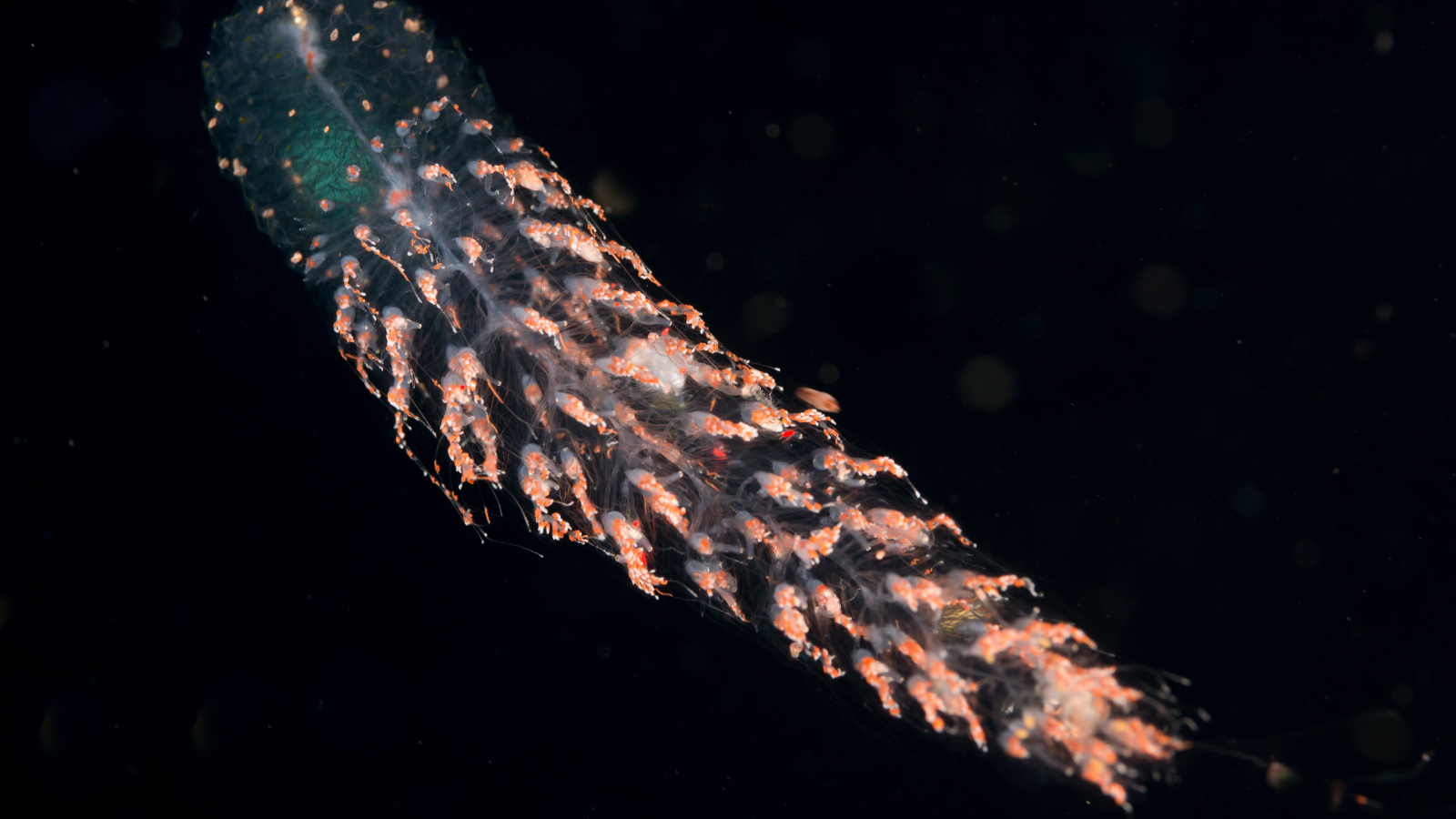Siphonophores: The clonal colonies that can grow longer than a blue whale
Siphonophores are unusual animals made up of individual organisms called "zooids," which each have a distinct function — despite being genetically identical.

Name: Siphonophores (Siphonophora)
Where they live: All oceans
What they eat: Small crustaceans, copepods and fish
Why they're awesome: The largest animal on Earth is thought to be the blue whale, but these strange sea creatures can grow even longer — reaching up to 150 feet (46 meters) in length.
There are around 175 species of siphonophores living in the deep sea throughout all of Earth’s oceans, although not every species is found in each ocean. Many siphonophores are long and string-like, but some, like the venomous Portuguese man o'war (Physalia physalis), resemble jellyfish.
Although a siphonophore may look like a single animal, it is actually a colony made up of individual organisms called "zooids," which each have a distinct function within the colony despite being genetically identical. Some catch prey and digest food, while others enable the colony to reproduce or swim. An individual zooid cannot survive on its own because they specialize in one function, so they rely on each other to form a "body."
A siphonophore develops from a single zoid that hatches from a fertilized egg. This first zooid develops growth zones, from which new zooids sprout — the siphonophore replicates itself asexually to create more and more zooids.
Sign up for the Live Science daily newsletter now
Get the world’s most fascinating discoveries delivered straight to your inbox.
Siphonophores feed on a variety of small sea animals, including plankton, fish and small crustaceans. The species that use toxins to capture prey have zooids that contain tiny but deadly tentacles containing an incapacitating toxin. To hunt, they cast their net of tentacles to sting prey and immobilize it, before pulling the food into their mouths.
One example of siphonophore feeding was captured by marine biologists in western Australia in 2020. They discovered a 150-foot giant siphonophore (Praya dubia) in a "doom spiral," which traps unsuspecting prey.
Many siphonophores are also bioluminescent and generate light via a chemical reaction to attract prey. Although most species glow green or blue, one species of siphonophore belonging to the genus Erenna was the first marine invertebrate found to emit a red glow. Red bioluminescence is very rare because the short wavelengths of blue and green light travel longer distances in the sea — and are more evolutionarily helpful to marine animals.
According to a 2005 study published in Science journal by marine biologist Steven Haddock of the Monterey Bay Aquarium Research Institute, this red light may help to attract fish because they mistake it for the red glow that comes from algae in the stomachs of prey like copepods.
Siphonophores are often hunted sea turtles or large fish. However, some species can use their stinging tentacles to defend themselves against these predators. These creatures are also hunted by tiny, translucent crustaceans called phronima, or pram bugs, which chew their way into siphonophores to live inside them, often killing them in the process.

Lydia Smith is a health and science journalist who works for U.K. and U.S. publications. She is studying for an MSc in psychology at the University of Glasgow and has an MA in English literature from King's College London.









